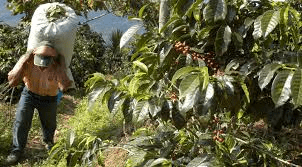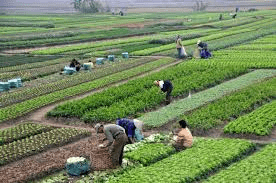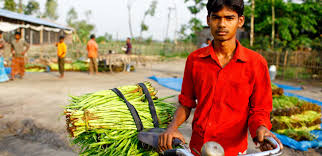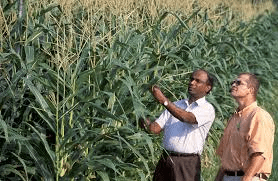Primary processing is the first step in transforming raw agricultural products into forms that are ready for consumption or further processing. This stage involves a series of basic activities, such as cleaning, sorting, grading, drying, and shelling, to prepare crops and other agricultural produce for storage, transportation, or additional processing. Understanding primary processing is essential for maintaining the quality and value of agricultural products.
Importance of Primary Processing in Agriculture
1. Maintains Quality: Primary processing helps in preserving the quality of agricultural products by removing impurities and preventing spoilage. Proper processing ensures that the produce remains fresh and nutritious until it reaches the consumer.
2. Reduces Post-Harvest Losses: By implementing effective primary processing techniques, farmers can significantly reduce post-harvest losses caused by pests, moisture, and other factors. This leads to better yields and higher profits.
3. Increases Market Value: Well-processed agricultural products are more appealing to buyers and can fetch higher prices in the market. Grading and sorting, in particular, help in categorizing produce based on quality, which enhances its marketability.
4. Facilitates Transportation and Storage: Primary processing makes agricultural products easier to transport and store by reducing their bulk and weight. For instance, drying and dehydration remove moisture, making the products less prone to spoilage during transit.
5. Ensures Safety: Removing contaminants like dirt, stones, and pests during primary processing ensures that the final product is safe for consumption. This step is crucial in preventing foodborne illnesses.
Cleaning and Sorting Techniques
1. Manual Cleaning: In manual cleaning, workers use simple tools like sieves, brushes, and hands to remove impurities such as dirt, stones, and leaves from the produce. This method is suitable for small-scale operations.
2. Mechanical Cleaning: For larger operations, mechanical cleaning equipment like air blowers, screens, and aspirators are used to remove impurities. These machines are more efficient and can handle large volumes of produce quickly.
3. Sorting by Size: Sorting involves separating produce based on size using tools like screens or mechanical sorters. Larger items are separated from smaller ones, making it easier to package and process them.
4. Sorting by Weight: Weight-based sorting is often used for products like grains and seeds. This can be done using machines that measure the weight of each item and sort them accordingly.
5. Optical Sorting: Advanced sorting methods use optical sensors to detect and remove defective or discolored items from the produce. This method is highly accurate and ensures a higher quality product.
Read Also: Scrapie in Sheep and Goats: Description, Damages Caused, Control and Preventive Measures
Grading and Quality Control

1. Visual Inspection: Visual inspection is the most basic form of grading, where workers manually assess the quality of produce based on appearance, size, color, and shape. This method is often used in smaller operations or for products where visual quality is crucial.
2. Mechanical Grading: In mechanical grading, machines are used to grade produce based on size, weight, or other measurable attributes. This method is faster and more consistent than manual grading, making it ideal for larger operations.
3. Chemical Testing: For some products, chemical testing is used to assess quality. For example, moisture content, sugar levels, and acidity are tested to ensure the produce meets industry standards.
4. Electronic Grading: Advanced grading systems use electronic sensors and software to assess the quality of produce. These systems can detect subtle differences in quality that may not be visible to the human eye.
5. Quality Control Standards: Implementing quality control standards is essential for maintaining consistency in the final product. These standards vary depending on the type of produce and market requirements, and they guide the entire grading process.
Drying and Dehydration Methods
1. Sun Drying: Sun drying is the oldest and most common method of drying agricultural products. It involves spreading the produce out in the sun to remove moisture. While this method is simple and cost-effective, it can be weather-dependent and may take several days.
2. Shade Drying: Shade drying is similar to sun drying but is done under a shaded area to protect the produce from direct sunlight. This method is used for products that may lose quality or color when exposed to the sun.
3. Mechanical Drying: Mechanical dryers use hot air or heat to remove moisture from produce quickly. These machines are more efficient than sun drying and can be used in any weather conditions. They are commonly used for drying grains, fruits, and vegetables.
4. Dehydration: Dehydration involves removing nearly all the moisture from a product using controlled temperature and humidity settings. This method is commonly used for products like herbs, spices, and fruits that require long shelf lives.
5. Freeze Drying: Freeze drying is a method where the product is frozen and then the moisture is removed through sublimation (where the frozen water turns directly into vapor). This method preserves the flavor, color, and nutritional value of the product.
Read Also: 17 Medicinal Health Benefits Of Lotus Seed (Nelumbo nucifera)
Threshing and Shelling Techniques

1. Manual Threshing: Manual threshing involves beating or rubbing the harvested crops to separate the seeds or grains from the husks. This method is labor-intensive but can be effective for small-scale farming.
2. Mechanical Threshing: Mechanical threshers are machines that separate grains or seeds from the stalks and husks. These machines are much faster and more efficient than manual threshing and are commonly used for crops like rice, wheat, and corn.
3. Shelling: Shelling is the process of removing the outer covering or shell from nuts, seeds, or grains. This can be done manually using simple tools or with mechanical shellers that speed up the process.
4. Combined Harvesting and Threshing: Some modern harvesting machines, known as combine harvesters, can perform both harvesting and threshing simultaneously. These machines cut the crop, thresh it, and separate the grains in one operation, saving time and labor.
5. Post-Threshing Cleaning: After threshing, it’s important to clean the grains or seeds to remove any remaining husks, straw, or debris. This ensures that the final product is clean and ready for storage or further processing.
Milling and Grinding Processes
Milling and grinding are essential steps in the processing of various agricultural products. These processes involve breaking down raw materials into smaller particles to prepare them for further processing or direct consumption.
1. Understanding Milling and Grinding: Milling is the process of breaking down large materials into smaller pieces, typically using mechanical force. Grinding, on the other hand, is a finer process, reducing particles to a powder or paste-like consistency.
2. Types of Milling Equipment: There are different types of milling equipment used, depending on the product being processed. These include hammer mills, roller mills, and disc mills. Hammer mills use rotating hammers to crush the material, while roller mills use cylindrical rollers to compress and grind the material. Disc mills involve the use of rotating discs to achieve a similar outcome.
3. Importance of Proper Milling: Proper milling ensures that the product is uniform in size, which is important for consistent quality and efficient processing in later stages. For example, in flour production, evenly milled grains produce high-quality flour that is free from large particles.
4. Grinding for Different Products: Grinding is often used for products like spices, grains, and nuts. The size of the grind can vary depending on the intended use of the final product. A fine grind might be needed for flours, while a coarser grind is suitable for items like coffee beans.
5. Tips for Effective Milling and Grinding: To achieve the best results, ensure that your milling and grinding equipment is well-maintained and properly calibrated. Regular cleaning of the equipment is also essential to prevent contamination and ensure consistent output.
Blanching and Peeling Procedures
Blanching and peeling are important steps in the processing of fruits and vegetables. These procedures help in preserving the quality of the produce and preparing it for further processing or packaging.
1. Blanching Basics: Blanching involves briefly boiling vegetables or fruits and then quickly cooling them in ice water. This process helps in preserving the color, flavor, and texture of the produce. Blanching also helps in killing any surface bacteria, making the produce safer to eat.
2. Steps in Blanching: Start by bringing a large pot of water to a rolling boil. Place the fruits or vegetables into the boiling water for a specific amount of time, usually between 1 to 5 minutes, depending on the type of produce. After blanching, immediately transfer the produce into ice-cold water to stop the cooking process.
3. Peeling Procedures: Peeling is the process of removing the outer skin of fruits and vegetables. This can be done manually using a knife or peeler, or mechanically using specialized peeling equipment. Peeling is important for products like potatoes, tomatoes, and apples, where the skin might be tough or undesirable in the final product.
4. Benefits of Blanching and Peeling: Blanching and peeling help in retaining the nutritional value of the produce while enhancing its appearance and taste. These processes also make the produce easier to process further, such as in canning or freezing.
5. Common Mistakes to Avoid: Avoid over-blanching, as it can lead to loss of nutrients and a mushy texture. When peeling, ensure that the equipment or tools used are sharp and clean to avoid damaging the produce.
Packaging and Storage of Processed Produce

Packaging and storage are critical steps in maintaining the quality and extending the shelf life of processed agricultural products. Proper techniques can prevent spoilage, contamination, and loss of flavor or nutritional value.
1. Choosing the Right Packaging Materials: The choice of packaging material depends on the type of product being processed. Common materials include plastic bags, glass jars, and metal cans. For dried products, moisture-proof packaging is essential, while airtight containers are important for preserving the freshness of products like jams and sauces.
2. Packaging Techniques: Packaging can be done manually or with the help of machines. In manual packaging, products are placed in containers by hand and sealed. For large-scale operations, automated machines fill, seal, and label packages quickly and efficiently.
3. Storage Conditions: The storage conditions of processed produce depend on the product type. For example, dried fruits should be stored in a cool, dry place, while canned goods need to be stored in a temperature-controlled environment to prevent spoilage.
4. Labeling and Traceability: Proper labeling is essential for product traceability and consumer safety. Labels should include information like the product name, ingredients, expiration date, and storage instructions. This not only helps in identifying the product but also ensures that it is consumed within the safe period.
5. Monitoring Storage: Regularly check stored products for signs of spoilage or damage. Rotate stock to ensure that older products are used first, and maintain consistent storage conditions to prevent fluctuations that can affect product quality.
Challenges in Primary Processing
Primary processing of agricultural products involves several challenges that can impact the efficiency and quality of the final product. Understanding these challenges can help in developing strategies to overcome them.
1. Quality of Raw Materials: The quality of raw materials directly affects the outcome of the processing. Poor-quality materials can result in low yields and inferior products. It’s essential to source high-quality raw materials and inspect them before processing.
2. Equipment Maintenance: Regular maintenance of processing equipment is crucial for smooth operations. Equipment breakdowns can cause delays, increase costs, and lead to inconsistent product quality. Implementing a maintenance schedule can help in minimizing these issues.
3. Contamination Risks: Contamination is a major challenge in primary processing. This can occur due to improper handling, dirty equipment, or environmental factors. Ensuring a clean processing environment and following good hygiene practices are key to preventing contamination.
4. Labor Skill Levels: The skill level of workers involved in primary processing can significantly impact the efficiency and quality of the process. Training workers in the correct techniques and safety protocols is essential for successful processing.
5. Market Fluctuations: The prices of agricultural products can fluctuate due to various factors like weather conditions, demand, and supply. These fluctuations can affect the profitability of primary processing operations. Staying informed about market trends and diversifying products can help mitigate these challenges.
Conclusion
Primary processing is a critical step in the journey of agricultural products from farm to table. By understanding the processes of milling, grinding, blanching, peeling, packaging, and storage, you can ensure that the products are processed efficiently and maintain high quality. Overcoming the challenges in primary processing requires attention to detail, proper equipment maintenance, and skilled labor.
By following these guidelines, you can successfully navigate the complexities of primary processing and produce high-quality products that meet consumer expectations.
Read Also: The Different Types of Manure and How they Work
Frequently Asked Questions
We will update this section soon.

